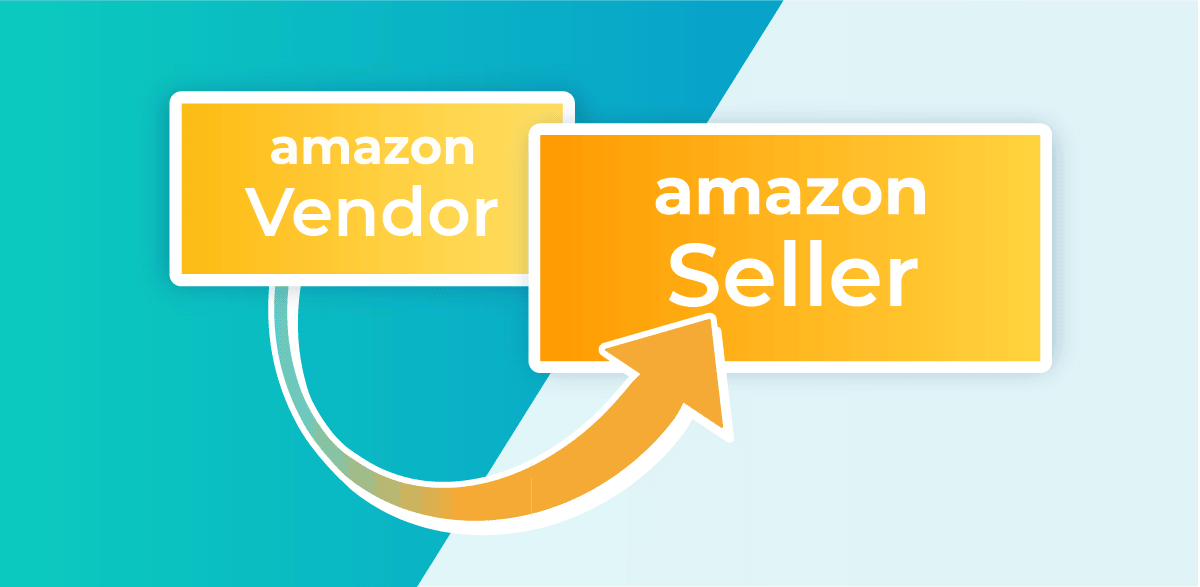Selling on Amazon has become one of the most powerful ways for businesses to reach customers worldwide. But success on the platform depends on choosing the right selling model. Two main options exist: Amazon Seller Central and Amazon Vendor Central. Each offers unique benefits, challenges, and levels of control. Many sellers feel confused when deciding which is best. Some even combine both in a hybrid strategy to maximize sales and flexibility. In this guide, we will explain everything you need to know about Amazon Seller Central vs Vendor Central, their pros and cons, and whether the hybrid model is the right choice for your business.
What is Amazon Seller Central?

-
Amazon Seller Central is the platform that allows third-party sellers to sell products directly to customers on Amazon. Anyone can sign up and start listing products, whether you are a small business or a global brand.
Key features of Seller Central include:
- Direct-to-consumer sales
- Full control over product listings, pricing, and promotions
- Management of inventory, shipping, and customer service (or outsourcing through Fulfillment by Amazon)
- Access to detailed analytics and sales reports
- Flexibility to scale your business at your own pace
Seller Central is ideal for entrepreneurs and brands that want independence, flexibility, and control. It gives you full ownership of your sales and customer interactions.
What is Amazon Vendor Central?
Amazon Vendor Central works exceptionally differently. An invite-only program exists where you sell products directly to Amazon at wholesale prices. Amazon then resells your products to customers under the label “Ships from and sold by Amazon.”
Key features of Vendor Central include:
- Bulk selling directly to Amazon
- Amazon manages pricing, shipping, and customer service
- Higher visibility and credibility with the “sold by Amazon” tag
- Simplified business operations with fewer responsibilities
- Access to advanced marketing programs available only to vendors
Vendor Central is best suited for large manufacturers and established brands that can handle wholesale production and want to leverage Amazon’s distribution power.
Amazon Seller Central vs Vendor Central: Key Differences
Feature Seller Central Vendor Central Who can join Open to anyone Invite-only Sales model Direct to consumer Wholesale to Amazon Control over pricing Full control Amazon sets prices Branding & listings Seller manages Amazon controls Customer interaction Direct with customers No direct contact Logistics Seller or FBA Fully managed by Amazon Profit margins Higher but with more work Lower but stable bulk sales Pros of Amazon Seller Central
- Full control of pricing and promotions
- Direct customer engagement and brand building
- Higher profit margins compared to wholesale
- Access to sales data and customer insights
- Easier entry for new sellers
Cons of Amazon Seller Central
- Higher workload with inventory, customer service, and logistics
- Competitive environment with millions of sellers
- Responsibility for account health and compliance
Pros of Amazon Vendor Central
- Amazon handles logistics, customer service, and shipping
- Products labeled “sold by Amazon” build trust
- Potential for higher sales volume with bulk orders
- Access to premium marketing options like Amazon Vine and A+ content
Cons of Amazon Vendor Central
- Lower profit margins because of wholesale pricing.
- No control over pricing or customer relationships
- Invitations required, making access limited
- Irregular purchase orders from Amazon
When to Choose Seller Central
Seller Central is the better option if you:
- Want control over your pricing and brand image
- Sell niche or unique products
- Prefer flexibility in inventory and promotions
- Are starting small and want to scale gradually
When to Choose Vendor Central
Vendor Central is ideal if you:
- Already operate as a manufacturer or large distributor
- Can handle bulk production and supply
- Want to reduce operational responsibilities
- Seek credibility and reach with Amazon’s backing
The Hybrid Selling Model
Some businesses choose not to decide between the two. Instead, they use both Seller Central and Vendor Central in a hybrid model. This approach allows them to:
- Sell bulk products through Vendor Central for stability
- Sell niche, seasonal, or premium products through Seller Central for control
- Avoid stockouts by continuing sales through Seller Central if Amazon stops reordering
- Balance profit margins with distribution reach
Benefits of the Hybrid Model
- Increased visibility by combining both selling models
- Flexible pricing control on Seller Central while leveraging Amazon’s distribution on Vendor Central
- Access to more sales channels, marketing tools, and customer insights
- Ability to test and launch new products faster
Challenges of the Hybrid Model
- Managing two platforms can be time-consuming
- Requires strong inventory coordination
- Complex pricing strategies to avoid conflicts
- Higher demand for resources and dedicated teams
How to Get Invited to Vendor Central
Since Vendor Central is invite-only, sellers should:
- Build strong brand presence and sales history on Amazon
- Ensure wholesale pricing is competitive
- Maintain high-quality products and compliance standards
- Network at trade shows and industry events
- Highlight their capability to handle bulk orders and logistics
Which Model is Best for Your Business?
No one-size-fits-all answer exists. Seller Central gives independence, higher margins, and direct customer connections. Vendor Central offers scale, trust, and simplified operations. The hybrid model can be powerful but requires significant resources.
Evaluate based on:
- Business size and production capacity
- Desired level of control
- Long-term growth goals
- Ability to manage logistics and customer service
Final Thoughts
Amazon Seller Central vs Vendor Central is a decision that shapes your growth on the platform. Seller Central empowers you with flexibility and control, while Vendor Central leverages Amazon’s scale and reputation. The hybrid model brings the best of both but adds complexity. The key is to align your choice with your goals, resources, and product strategy. No matter which model you choose, optimizing your presence on Amazon is essential for long-term success.
FAQs
What is the main difference between Amazon Seller Central and Vendor Central?
Seller Central allows third-party sellers to sell directly to customers, while Vendor Central involves selling products wholesale to Amazon.
Is Vendor Central better than Seller Central?
Vendor Central offers scale and credibility, but Seller Central provides higher profit margins and control. The better choice depends on your business goals.
Can I use both Seller Central and Vendor Central?
Yes, many brands use a hybrid strategy to maximize sales and balance control with Amazon’s reach.
How do I get invited to Vendor Central?
Amazon invites manufacturers, brands, and high-performing sellers. Building strong sales history and competitive wholesale pricing increases your chances.
Which is better for small businesses?
Seller Central is usually the best choice for small businesses, as it requires no invitation and gives full control over sales.
Do sellers make more money on Seller Central or Vendor Central?
Sellers often earn higher margins on Seller Central because they control pricing. Vendor Central provides bulk orders but at wholesale prices, which usually means lower profit per unit.
Is Vendor Central good for brand visibility?
Yes. Products sold through Vendor Central display the “Ships from and sold by Amazon” tag, which builds customer trust and can increase visibility in search results.
Can small brands join Vendor Central?
Vendor Central is invite-only, and Amazon usually prefers established brands or manufacturers. Small brands can start on Seller Central and later get noticed for a Vendor invitation.
Does Amazon handle returns on Vendor Central?
Yes. In Vendor Central, Amazon manages customer service, including returns and refunds. In Seller Central, sellers must handle returns unless they use FBA.
Which model gives more advertising options?
Both offer advertising tools, but Vendor Central provides access to exclusive programs like Amazon Vine and enhanced A+ content, while Seller Central allows Sponsored Ads and Brand Registry features.
Is Fulfillment by Amazon (FBA) part of Seller Central or Vendor Central?
FBA is part of Seller Central. Sellers can send inventory to Amazon’s warehouses, and Amazon handles packing, shipping, and returns. Vendor Central does not use FBA, as Amazon manages fulfillment directly.
Can I switch from Seller Central to Vendor Central?
You cannot apply directly to Vendor Central. However, strong sales and consistent performance on Seller Central can increase your chances of receiving an invitation.
What are the risks of Vendor Central?
The main risks include loss of pricing control, unpredictable order quantities, and dependence on Amazon’s purchasing decisions.
Is Seller Central more competitive than Vendor Central?
Yes. Seller Central has millions of sellers competing for the Buy Box, making it highly competitive. Vendor Central has fewer participants but requires bulk supply and wholesale pricing.
Can I use Hybrid selling if Amazon stops reordering on Vendor Central?
Yes. If Amazon reduces or stops orders through Vendor Central, you can continue selling the same products on Seller Central to maintain availability.
